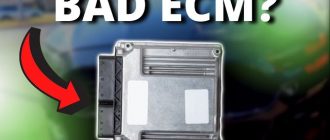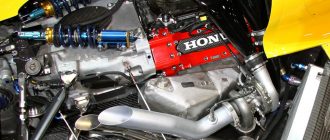## **Do Not Drive Car with Engine Light Flashing: Protect Your Vehicle and Safety**
**Introduction**
Your vehicle’s engine light, also known as the check engine light or malfunction indicator lamp (MIL), is a critical dashboard indicator that should not be ignored. When the engine light flashes, it signals a potentially severe issue with your car’s engine or emission control systems. Driving with a flashing engine light can lead to costly repairs and, in some cases, hazardous situations. This article will delve into the reasons why you should never drive with a flashing engine light and provide guidance on what to do when it appears.
**Why You Should Never Drive with a Flashing Engine Light**
A flashing engine light is a warning that your car’s engine or emission systems are experiencing a critical problem. Ignoring this warning can have serious consequences:
# **1. Engine Damage**
A flashing engine light typically indicates a severe engine malfunction that can cause significant damage to your vehicle’s motor. Driving with the engine light flashing puts excessive strain on the engine, leading to further damage and costly repairs.
# **2. Exhaust System Failure**
A flashing engine light may also point to an issue with your vehicle’s exhaust system, such as a faulty catalytic converter. Driving with a failing exhaust system can release harmful pollutants into the environment and damage your car’s emission controls.
# **3. Fuel System Problems**
A flashing engine light can indicate problems with your vehicle’s fuel system, such as a fuel leak, faulty fuel pump, or clogged fuel filter. Ignoring these issues can lead to engine stalls, decreased fuel efficiency, and potential fire hazards.
# **4. Transmission Issues**
Some vehicles’ flashing engine lights may also indicate transmission problems. Driving with a flashing engine light and transmission issues can exacerbate the problem, causing premature transmission failure and expensive repairs.
# **5. Safety Hazards**
A flashing engine light can also signal safety concerns, such as malfunctioning airbags, anti-lock brakes, or traction control systems. Driving with these systems disabled poses a significant safety risk and should be avoided.
**What to Do When Your Engine Light Flashes**
If your engine light flashes while driving, it is crucial to take immediate action:
# **1. Pull Over Safely**
As soon as possible, pull over to a safe location. Do not continue driving with a flashing engine light.
# **2. Turn Off the Engine**
Turn off the vehicle’s engine to prevent further damage.
# **3. Call for Assistance**
Contact a towing service or a qualified mechanic to have your vehicle towed to a repair shop. Do not attempt to drive your car with a flashing engine light.
**Diagnosis and Repairs**
Once your vehicle is at a repair shop, a trained mechanic will use a diagnostic tool to identify the underlying cause of the flashing engine light. Common issues that trigger a flashing engine light include:
# **1. Misfiring Cylinders**
Misfiring cylinders, caused by faulty spark plugs, ignition coils, or fuel injectors, can lead to a flashing engine light.
# **2. Faulty Oxygen Sensors**
Oxygen sensors measure the amount of oxygen in the exhaust system. Malfunctioning oxygen sensors can trigger a flashing engine light and affect fuel efficiency.
# **3. Catalytic Converter Failure**
A clogged or damaged catalytic converter can cause a flashing engine light and contribute to poor exhaust emissions.
# **4. Fuel Injector Problems**
Clogged or malfunctioning fuel injectors can affect fuel delivery to the engine, triggering a flashing engine light.
# **5. Exhaust Gas Recirculation (EGR) Valve Issues**
EGR valves control exhaust gas flow back into the engine. Faulty EGR valves can cause a flashing engine light and increase nitrogen oxide (NOx) emissions.
**Conclusion**
Driving with a flashing engine light is a serious matter that should not be ignored. By heeding this warning, you can protect your vehicle from severe damage, prevent costly repairs, and maintain the safety of yourself and others on the road. If your engine light flashes while driving, immediately pull over safely, turn off the engine, and call for assistance. Remember, your vehicle’s engine light is a crucial indicator designed to safeguard your car and ensure your safety on the road.




